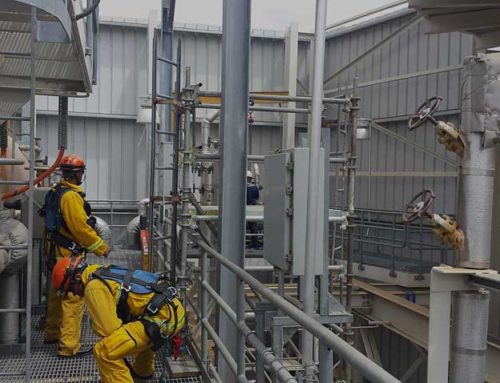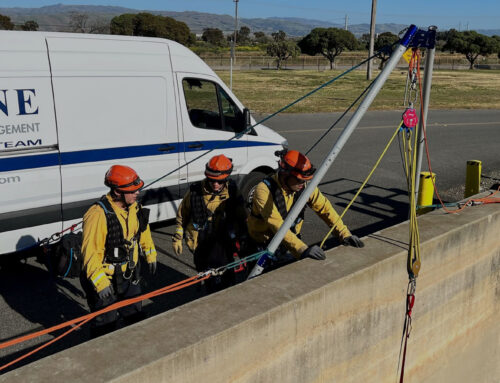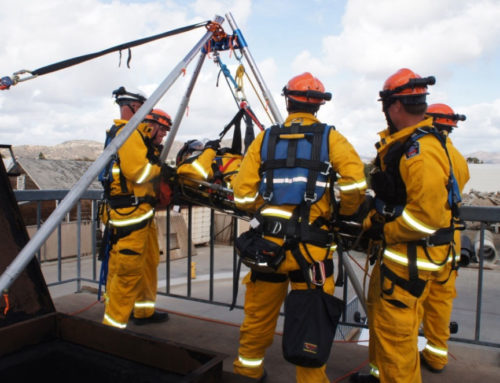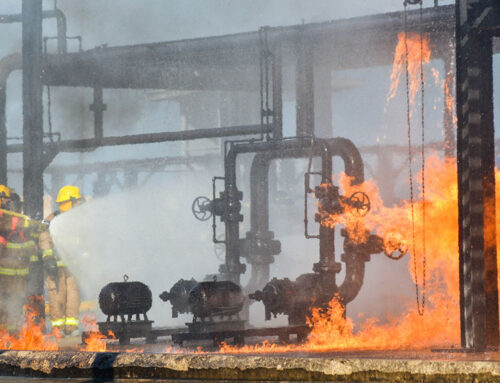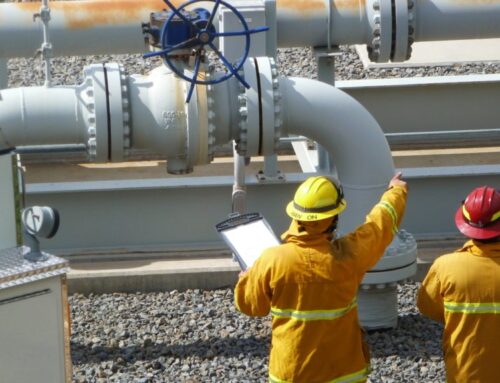Workplaces of all kinds have hazards or situations where fires can start including flammable chemicals for production activities, welding operations, or even careless workers. In construction, the fire hazards can be brought to the site by any one of the subcontractors working the project. The Occupational Safety and Health Administration (OSHA) and the National Fire Protection Association (NFPA) have regulations and standards in place to help employers with fire prevention and protection efforts.
Fire basics lend to the understanding there are four components necessary to sustain combustion:
- Fuel
- Heat
- Oxygen
- A chemical reaction
A fire will not burn without these four conditions being present. Fuels can include a variety of materials both liquid and solid. However, whatever the fuel it must be in the vapor stage in order to burn. Once in the vapor stage the flammable material will mix with oxygen to form as combustible mixture ready to burn. If the mixture is exposed to heat, then it will burn to create a chemical reaction changing form and releasing other gases.
There is a range between percent oxygen and percent fuel to be conducive to combustion. Although, at the lower percentage of oxygen/fuel ratio the volume in the air is too lean to burn or explode if an ignition source is present; this is called the lower flammability limit (LFL)/lower explosive limit (LEL). Conversely, when the air is too saturated with fuel and oxygen, then again it becomes hard for the burn or explosion to occur. This is known as the upper flammability limit (UFL)/upper explosive limit (UEL).
The NFPA and OSHA documents are used in tandem to protect the workers from fire hazards through federal regulations and best practices. Many fire emergencies become worse in workplaces when travel ways to exits and exits are blocked or locked. It is prohibited by law for employers to have locks or have exit doors needing special knowledge how to open. In general, a door should not take more than two actions to open.
NFPA documents compliment the OSHA standard by illustrating how to comply with federal laws with best practice activities. The group was founded in 1896 to design sprinkler systems and develop techniques for their installations and maintenance. However, the organization has published and updates hundreds of standards and codes for fire-related topics.
The most famous NFPA codes are:
- NFPA 13 Standard for the Installation of Sprinkler System
- NFPA 30 The Flammable and Combustible Liquids Code
- NFPA 58 Safe LP-Gas storage, Handling, Transportation, and Use
- NFPA 70 (National Electrical Code or NEC) Use to understand how to comply with the OSHA electrical standards
- NFPA 99 The Health Care Facilities Code
- NFPA 101 The Life Safety Code used to establish minimum requirements for life safety in buildings
- NFPA 704 Standard System for the Identification of the Hazards of Materials for Emergency Response
OSHA has electrical standards which are federal law and comes with the consequence of citation, fines, and/or jail. For the construction industry the OSHA regulation is found in 29 CFR 1926 Subpart K. In this subpart the contractors are given guidelines to follow to safely install and use electrical equipment or components.
For General Industry, OSHA requires the design, use, and safe work practices of electrical work to follow 29 CFR Subpart S. Many of the frequently cited standard for OSHA each year are related to electrical hazards leading to fires in a workplace.
Additionally, OSHA has standards specifically identifying how to have fire prevention for both general industry and construction:
- Ensure workers have safe egress and access to evacuate burning buildings
- Have fire extinguishers or fire suppression equipment available for firefighting measures
- Teach workers the importance of fire protection and prevention
There are services available to help the business owner protect workers from fire hazards or events causing loss of life, property, or equipment. Transformative leaders are proactive in having fire protection services retained prior to events. OSHA’s regulations and the NFPA standards clearly state what is required for fire prevention and protection. It is up to the employer to follow the standards for the protection of their workers.


